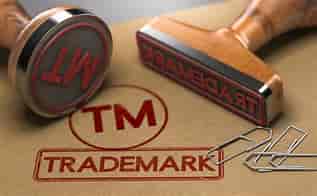Introduction
Trademarks are distinctive or unique marks used or proposed to be used in relation to goods, to indicate a connection in the course of trade with persons that have the right either as proprietors or registered users, to make use of the mark. Such marks can be invented words, brands, headings, labels, tickets, names, signatures, devices, letters, numerals, or any combination thereof.
In Nigeria, the principal legislation that regulates trademarks is the Trademarks Act, Laws of the Federation of Nigeria, 2004 (TMA) which establishes the office of the Registrar of Trademarks responsible for receiving applications for trademark registration.
This article provides a comprehensive analysis of the registration process, infringement provision, and enforcement mechanisms of trademarks in Nigeria.
Requirements for Registration of Trademark
- Applicant’s details (i.e., name, address, signature, and nationality);
- Details of the trademark;
- A representation of the mark;
- The classification of goods and/or services (it is important to note that Nigeria uses Nice Classification of Goods and Services); and
- An executed Power of Attorney.
Procedure for Registering a Trademark
- Conduct a search: Before initiating a trademark application, it is imperative to conduct a thorough search at the Trademarks Registry to ensure that the intended mark does not infringe on any existing trademark. Searches can now be done online on the Trademarks portal.
- Filing the Application: Upon ascertaining the availability of the proposed mark for registration within the relevant class, the next step is to file an application with the requisite documents and pay the required fees. The Registrar then issues an Acknowledgment Letter confirming receipt of the application.
- Examination and Acceptance: After filing the application, the Registrar examines the trademark for compliance with statutory requirements. If the application is approved based on the distinctiveness of the mark, the Registrar will issue a Letter of Acceptance within a period of one (1) to three (3) months. However, where the mark is refused, a Letter of Refusal is issued stating the reasons for refusal.
- Publication and Certification: Where the Registrar finds that the application is in order, the mark is published in the Trademarks Journal which serves as a form of notice to the public to oppose the registration of the Trademark. The timeline within which an opposition may be brought is two (2) months from the date of publication. Where there is no opposition to the publication or where the opposition has been raised and is unsuccessful, the Certificate of Registration establishing exclusive rights to the trademark for the specified goods or services is issued by the Registrar of Trademarks.
A trademark once registered is valid for an initial period of seven (7) years and subsequent renewals are valid for fourteen (14) years upon payment of the prescribed renewal fee.
Trademark Infringement
A trademark is infringed when an unauthorized party uses a registered mark, or a similar mark in connection with goods or services that are identical or similar to those covered by the registered mark. This is provided for in Section 5 (2) of the Trademarks Act. Infringement may also arise from activities that dilute the distinctiveness of a well-known mark or result in unfair competition. Where such rights are infringed upon, the proprietor can institute an action in the Federal High Court for infringement of such trademark. To establish a claim of trademark infringement in Nigeria, the burden of proof is on the proprietor of the mark to establish the following elements:
- The plaintiff must demonstrate valid ownership of the registered mark in question.
- The defendant must be using a mark that is identical or similar to the registered mark, creating a likelihood of confusion among consumers.
- The plaintiff must show that the unauthorized or illegal use of the mark is likely to confuse or deceive consumers regarding the source of the goods or services.
Also, in the case of an unregistered trademark, the proprietor may initiate legal action as a remedy, for passing off when there is a violation or infringement.
Enforcement of Rights
The owner of a registered trademark can enforce his rights through any of the following options:
- Filing an opposition within sixty (60) days following the publication of the mark in the trademarks journal against the registration of a similar or identical mark that has the potential to deceive or create confusion. The notice of opposition must be in writing and must contain the grounds for opposition.
- Commencing legal proceedings for trademark infringement against the infringing party. This would avail the proprietor with remedies including but not limited to the grant of injunctive reliefs, order of account of profit, damages, Anton pillar order, delivery up or destruction, and costs.
- Issuing a cease-and-desist letter to the offending entity. This letter should contain a comprehensive depiction of the trademark that is subject to infringement, accompanied by a clear warning to the infringing party, urging them to desist from any further acts of infringement.
- A formal application can be made to the Trademarks Registrar or the Federal High Court for the cancellation of the trademark which is to be supported with evidence of prior registration. Applications can also be made to relevant government agencies to prohibit the registration of the name without the consent of the proprietor.
Conclusion
In today’s contemporary and fiercely competitive business environment, the safeguarding of intellectual property has emerged as an indispensable requirement for both corporate entities and individuals. By registering trademarks, individuals and companies can enjoy exclusive rights, prevent unauthorized use, build brand recognition, and gain a competitive edge in business. It, therefore, goes without saying that the benefits of Trademark registration far outweigh non-registration and should be encouraged.
Author
Associate
+2349017739044

